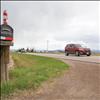School meal participation rises statewide, locally
Keep Reading!
You’ve reached the limit of 3 free articles - but don’t let that stop you.
 Mission Valley Hwy. 93 improvement projects advance
Mission Valley Hwy. 93 improvement projects advance MISSOULA — The Montana Department of Transportation (MDT) and project partners invite the public and media to attend an open house to learn about design and construction plans for both the US Highway 93 - Ninepipe...
 Sports for April 23, 2025
Sports for April 23, 2025Tennis Polson BIGFORK — Summer Newman earned a pair of singles wins as the Polson girls defeated Bigfork and Stevensville in duals on Monday, April 14. The Pirates defeated Stevensville 7-0. and beste...
 Legislative Notes
Legislative NotesAs moms, educators, and lawmakers, we came to the Capitol this session with one clear goal: to improve opportunity for Montana’s kids. But with just weeks left in the legislative session, we’re concerned tha...
POLSON — James Phillip Lawrence of Polson pleaded not guilty to felony charges of deliberate homicide and tampering with or fabricating physical evidence in the death of Edwin “Ed” Loder of Ronan. Lawrence was arraigned in Lake County District Court on Wednesday, Sept. 18. ...
 Holiday toy drive underway at local restaurants
Holiday toy drive underway at local restaurantsPOLSON — The third annual Christmas Community Toy Drive, sponsored by the Finley Point Grill, East Shore Smokehouse and the Lounge, is now underway. Community members can drop off new, unwrapped toys at any of ...
Send us your news items.
Use these forms to send us announcements.
Birth Announcement
Issue Date: 3/20/2019
Last Updated: 3/19/2019 12:56:34 PM |
By
Mary Auld
You’ve reached the limit of 3 free articles - but don’t let that stop you.
Sponsored by:
© Copyright Valley Journal, Ronan, MT. All rights reserved. | Privacy Policy
| Terms of Use | Submission Guidelines
Weather data provided by 
